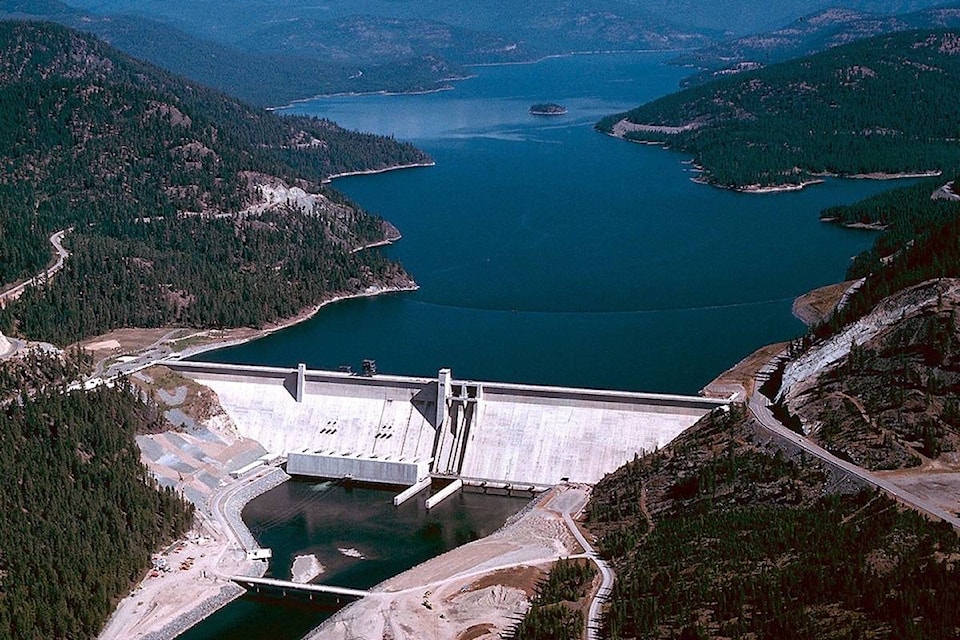Officials are predicting that water levels at Lake Koocanusa reservoir will be close to full by the end of July, followed by a gradual draw down by the end of September.
Steve Barton, with the U.S. Army Corps of Engineers, says modelling indicates that the Lake Koocanusa reservoir will be five feet away from full by the middle of the summer.
“Inflows are just beginning to start to pick up,” Barton said. “Runoff has begun and we’re seeing the snows melting in the mid- and lower elevations, and expect the higher elevation runoff to start in force here as we get further into May.”
Once the peak capacity hits by the end of July, the reservoir will be gradually drawn down to ten feet from full by the end of September. A full reservoir means that water levels are at an elevation of 2,459 feet.
“The probability of getting into that top ten feet of the reservoir looks much better this year than in the years past,” Barton said.
According to the latest report from the B.C. River Forecast Centre, the snowpacks in the West Kootenay, East Kootenay and Upper Columbia are all moderately high for this time of year.
The Lake Koocanusa reservoir feeds into the Libby Dam, which generates power and provides flood control management downstream of the Kootenai River. Starting in roughly a week, the dam will be releasing flows to support efforts by sturgeon to spawn naturally in the river’s habitat.
Typically, in years past, the dam has done a ‘double-pulse’ — two separate operations where flows are increased — however, that has recently changed to doing one longer single peak flow, focusing more on the duration.
The single pulse has yielded some encouraging results to get sturgeon into preferred rocky substrate areas above Bonner’s Ferry suitable for spawning, according to a U.S. biologist.
“Last year, being a very low water year, we were able to do a sturgeon operation, but it was at pretty minimal levels, so we didn’t really see a big response, but hopefully this year, with more water available, we’ll see more sturgeon in our preferred habitat spawning grounds,” said Sean Sweeney, Endangered Species Biologist with U.S. Fish and Wildlife Service.
Natural sturgeon spawning in the Kootenai River has been a challenge for years. Two years ago, a single live egg from natural spawning was discovered, which was seen as an encouraging development for a species that has struggled to spawn in wild habitat, without the assistance of fish hatchery programs.
“About now, we’re going to start seeing some of the first hatchery sturgeon released in the mid-90s start to reach sexual maturity, so hopefully that means we start to see more spawning sturgeon in the Kootenai River,” Sweeney added.
North of the border
There are three other dams on the Canadian side of the Columbia Basin, which are managed by BC Hydro — the Keenleyside Dam, Mica Dam and Duncan Dam.
Darren Sherbot, Manager, Operations Planning, with BC Hydro, says modelling and forecasts are predicting more water fill from the spring freshet in the region that what was recorded over the last few years.
“Certainly compared to last year, we had much more fill across the Basin and Kinbasket, around 108 per cent on our water supply forecast, and Arrow is above average and certainly the Kootenay basin as well,” Sherbot said. “But not as much as what we had observed the year prior to this in 2018.”
Sherbot also noted that there is potentially an elevated risk of potential flood concerns at Kootenay Lake. However, he added most of BC Hydro’s historical tracings and modelling have flows coming in below the 1,752-foot elevation capacity.
Sherbot added that the predictions are forecast driven and may change if there are dramatic swings in weather patterns such as cooling periods or sustained higher temperatures.
BC Hydro recently released a report identifying a 10 per cent drop in electricity demand due to impacts caused by COVID-19, and could drop even lower by next spring, depending on how fast the economic recovery gets underway.
The report, titled ‘Demand Dilemma’ noted that larger reservoirs could reach capacity, creating the need for excessive spilling over the next year.
“While controlled spilling is an effective means of moving water out, it does come with challenges and requires careful planning,” reads the report. “BC Hydro must spill water before a reservoir is full or expected to get full as waiting until it is at capacity can increase the risks of flooding of areas downstream, in the event of significant rainfall.
“A prolonged spill can lead to high total dissolved gas pressure (TDG) downstream, which can harm fish. During short-term spilling, fish are able to find refuge in calmer waters, but frequent exposure to high TDG may have a cumulative impact on them. This means prolonged, excessive spilling can increase fish mortality rates.”
Much of the decline in energy demand comes from major industries, such as forestry, mining and gas, according to the report.
BC Hydro is also going ahead with the Koocanusa Debris Management program with additional safety measures in mind for workers and the public due to COVID-19. Cleanup typically focuses on floating debris on the Canadian side of the reservoir.
Anyone with questions about the program is encouraged to contact BC Hydro rather than approaching someone working in the field.
trevor.crawley@cranbrooktownsman.com
Like us on Facebook and follow us on Twitter
Want to support local journalism during the pandemic? Make a donation here.
